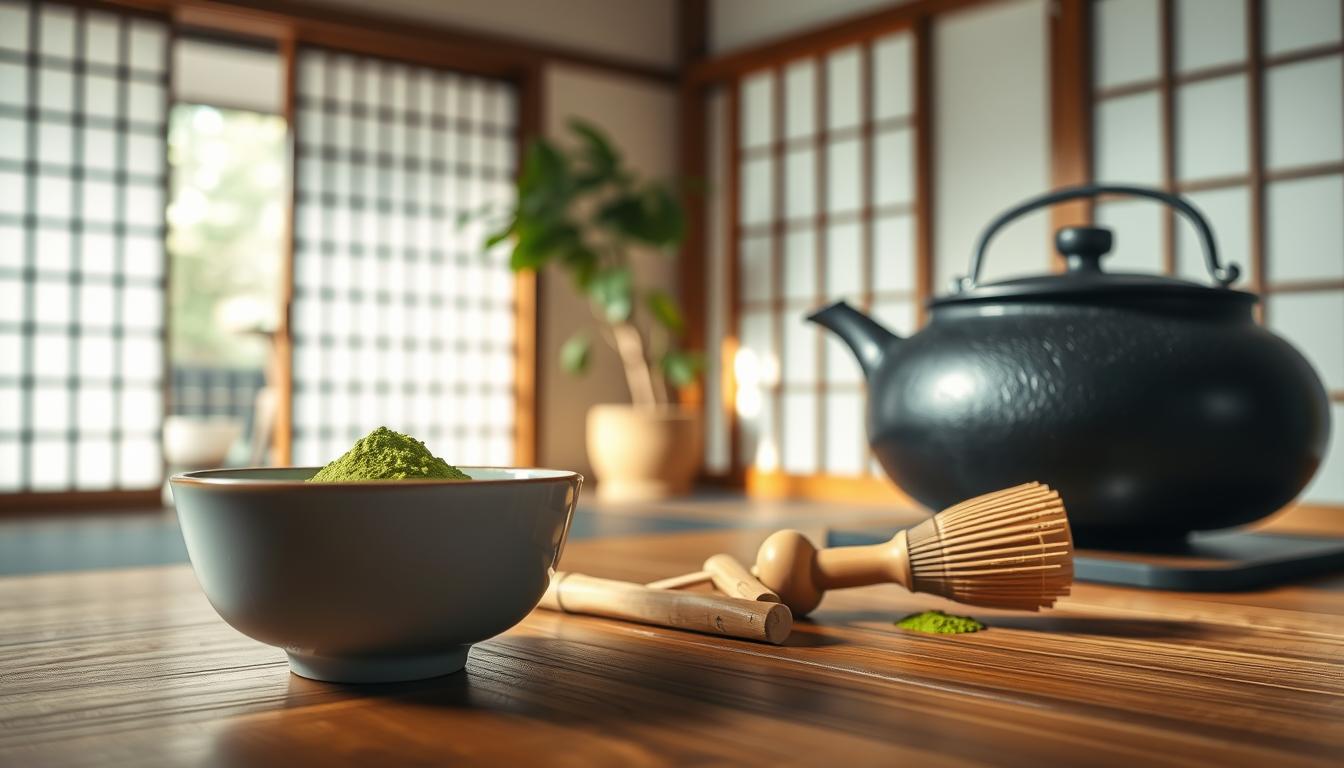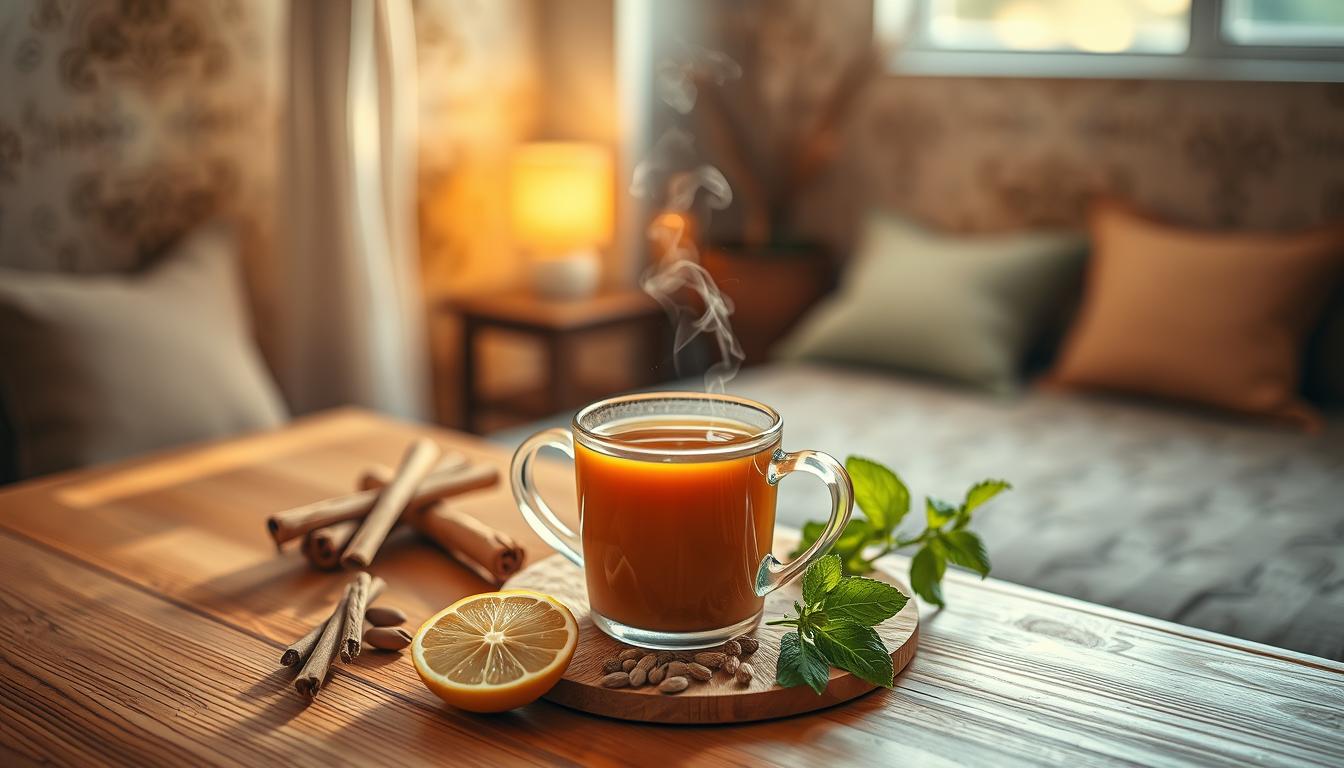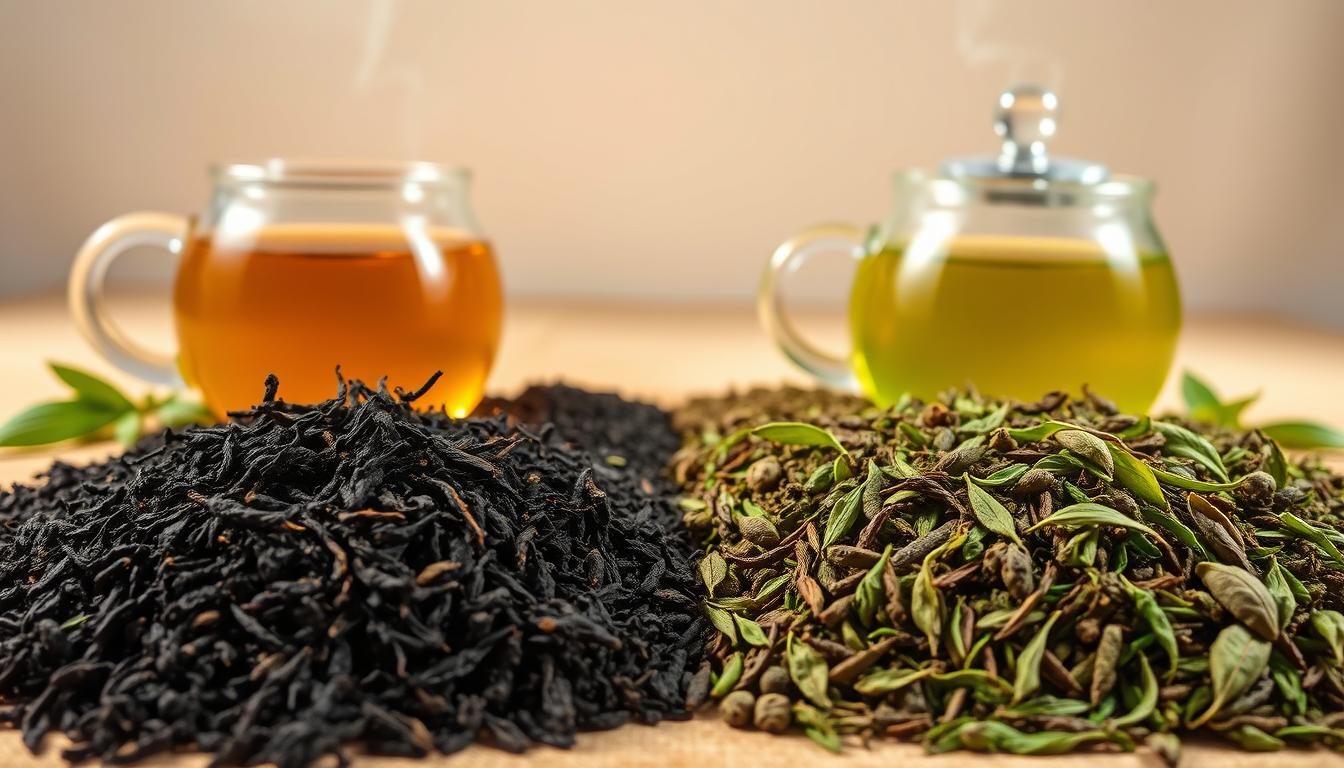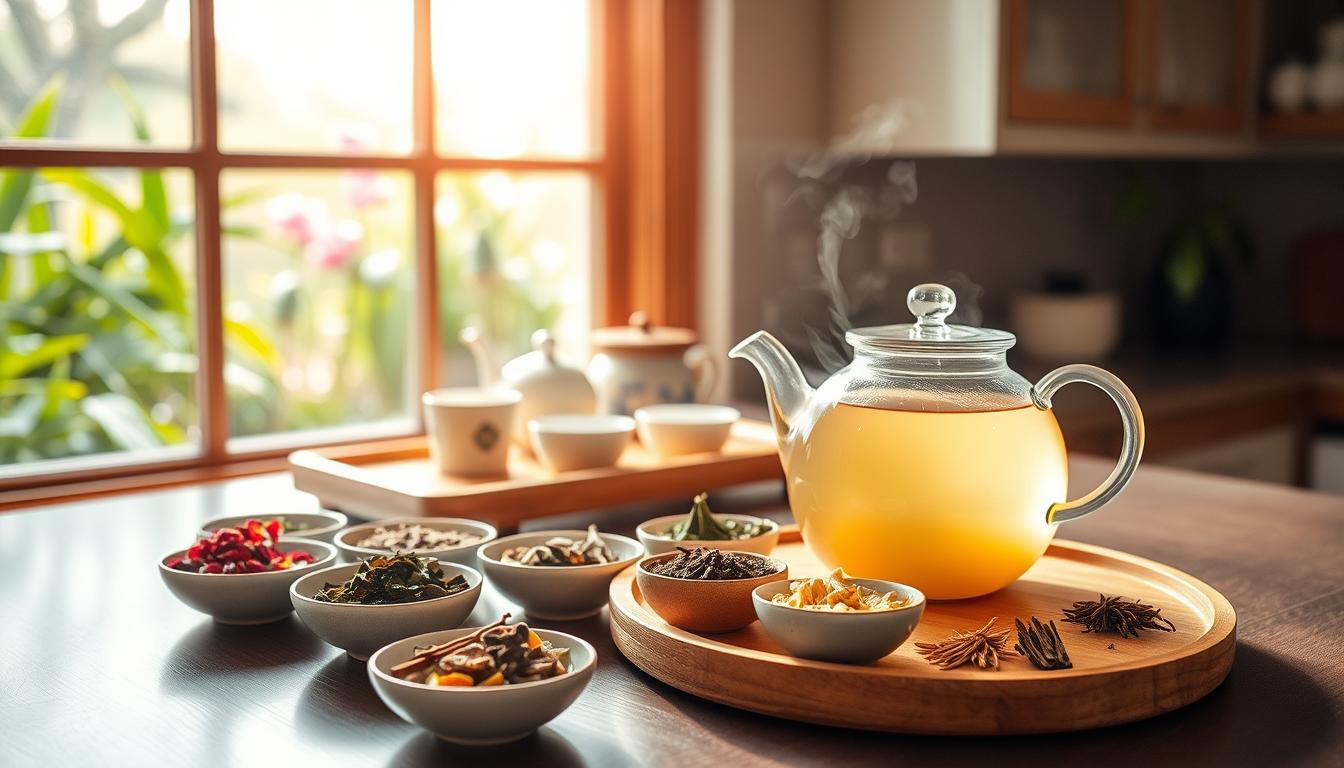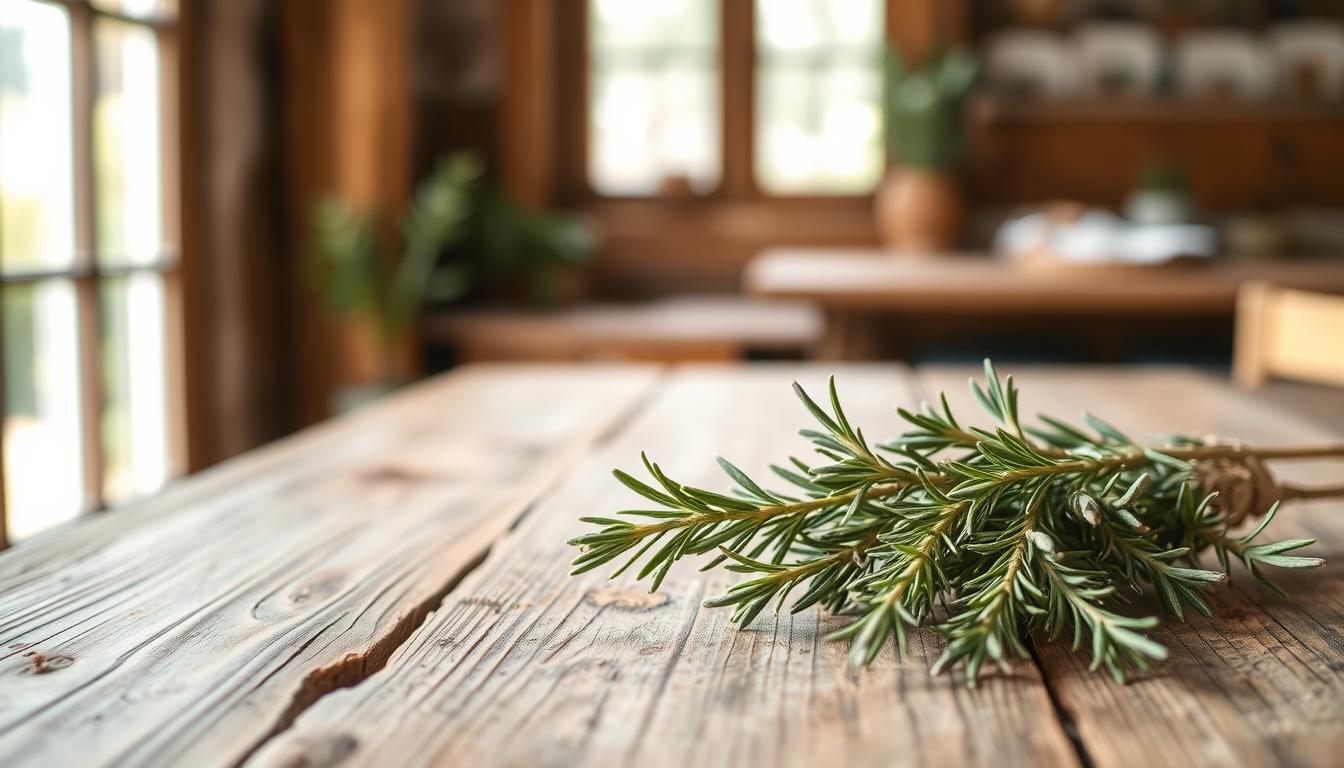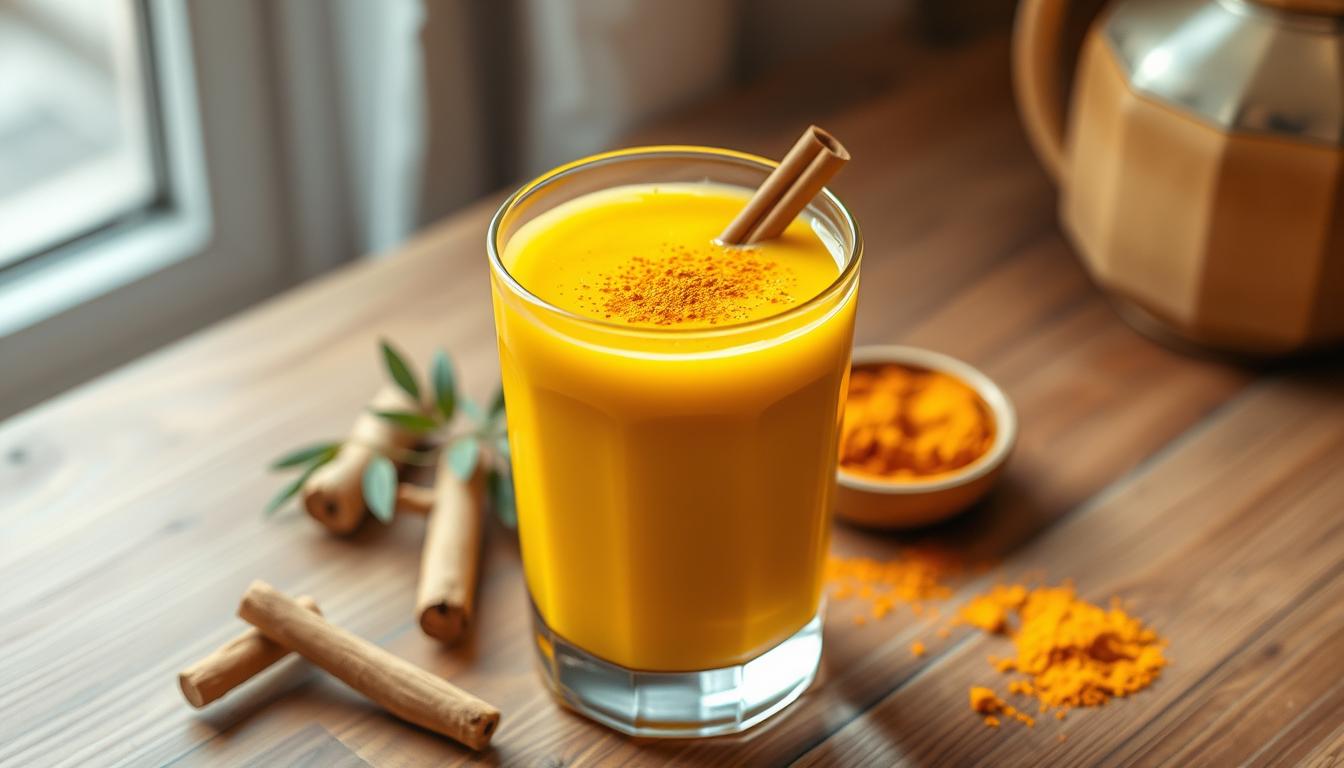How to Make Matcha : Step-by-Step Guide for Beginners
You’re about to start a journey into the world of matcha tea. This drink is famous for its valued wellness qualities and special taste.
As a beginner, knowing how to make matcha is key. This guide will show you how to make it, tools you’ll need, and the flavors you can expect — including answers to common questions like what does matcha taste like.
With matcha becoming more popular worldwide, learning about it is exciting. It’s a great way to try new tastes and mindful lifestyle practices. For a calming effect, try incorporating herbal teas such as lemon balm tea alongside your matcha.
To support overall wellness, consider immune-boosting drinks in addition to your matcha.
Table of Contents
What Is Matcha? Understanding the Japanese Green Tea Powder
Have you heard of matcha? It’s a finely ground green tea powder from Japan. It’s used in the Japanese Tea Ceremony. Matcha is more than just tea; it’s a cultural experience.
The History and Cultural Significance of Matcha
Matcha started in China but is now a big part of Japanese culture, mainly in Zen Buddhism. Over time, making and drinking matcha became a key part of Japanese tradition. The Japanese Tea Ceremony, or Chanoyu, Sado, or Ocha, is all about matcha.
This ceremony teaches us about harmony, respect, purity, and peace. It’s a special way to enjoy matcha.
Matcha is important for several reasons:
- It’s used in Zen Buddhist meditation.
- The Japanese Tea Ceremony is an art form.
- Drinking matcha teaches us to be present.
How Matcha Differs from Regular Green Tea
Matcha and regular green tea come from the same plant, Camellia sinensis. But they are made and used in different ways. Matcha is grown in the shade, which makes it green and full of chlorophyll. The leaves are picked by hand, then ground into a fine powder.
Here’s how matcha and regular green tea differ:
- Nutritional Content: Matcha has more natural compounds because you consume the whole leaf.
- Preparation Method: You whisk matcha into hot water, but you steep green tea.
- Taste and Texture: Matcha tastes rich and has a smooth texture when made right.
What Does Matcha Taste Like? Flavor Profile for Newcomers
Exploring matcha reveals a rich, complex flavor. It combines earthy, grassy notes with a hint of umami. This mix can be both refreshing and a bit scary for those new to it.
The Unique Umami Flavor of Quality Matcha
Top-notch matcha shines with a vibrant green color and a smooth, slightly sweet taste. Its umami flavor, often seen as savory or brothy, marks it as premium. This taste comes from the tea leaves’ high levels of L-theanine, an amino acid.
How to Distinguish Good Matcha from Low-Quality Varieties
To spot high-quality matcha, look for these signs:
| Characteristic | High-Quality Matcha | Low-Quality Matcha |
|---|---|---|
| Color | Vibrant green | Dull or yellowish green |
| Taste | Smooth, slightly sweet, umami | Bitter, astringent |
| Texture | Fine powder | Coarse or gritty |
Knowing these differences helps you choose the right matcha for you.
Wellness Benefits of Matcha: How to Make Matcha Part of Your Routine
Matcha, the finely ground green tea powder, is appreciated for its wellness qualities. It contains natural compounds, making it a popular choice for a balanced lifestyle.
Drinking matcha daily can improve balance and calmness. Learning how to make matcha properly ensures you enjoy its full wellness benefits.
For more gentle herbal options, see our guide on what chamomile tea tastes like.
Beneficial Compounds and Nutritional Content
Matcha is rich in natural compounds that contribute to overall balance. It also contains L-theanine, which can promote calmness and alertness. Additionally, it provides vitamins A and C, potassium, and fiber, making it a valuable part of your daily routine.
How Much Caffeine in Matcha: Comparing to Coffee and Tea
Matcha has more caffeine than green tea but less than coffee. A typical serving has around 34-40 mg of caffeine.
Caffeine Content by Serving Size
The caffeine in matcha changes with the serving size. A small serving (about 1 gram of matcha powder) has less caffeine. A larger serving (about 2 grams) has more.
How Matcha Caffeine Affects Your Body Differently
Matcha’s combination of caffeine and L-theanine provides a gentle, sustained lift in energy and alertness without jitters. This balance helps support focus and attentiveness throughout the day.
Adding matcha to your daily routine can be rewarding. You’ll enjoy beneficial natural compounds and a smoother sense of focus. You can also explore other home infusion recipes to complement your matcha ritual.
Essential Tools and Equipment for Making Matcha
To make the perfect matcha, you need the right tools. A mix of tradition and modern convenience is key. Matcha preparation is an art that has been perfected over centuries. The right equipment is essential for the perfect flavor and texture.
Traditional Tools: Chawan, Chasen, and Chashaku
The traditional tools for matcha are the chawan (tea bowl), chasen (bamboo whisk), and chashaku (bamboo scoop). These are the essential items you need when learning how to make matcha the authentic Japanese way. The chawan holds the matcha, the chasen whisks it, and the chashaku measures the powder. These tools are not just functional; they also hold deep cultural and spiritual value in the Japanese tea ceremony.
Modern Alternatives for Beginners
For newcomers, modern tools make matcha easier to prepare. Electric frothers and stainless steel whisks are great alternatives. They are durable, easy to clean, and simplify the process.
Budget-Friendly Starter Options
Beginners can start with affordable tools like a basic electric frother or a simple stainless steel whisk. These options are budget-friendly and let you begin making matcha without a big investment.
When to Invest in Higher-Quality Tools
As you get more comfortable with matcha, consider investing in better tools. A high-quality chasen can make your matcha frothier. Better tools improve your experience, the flavor, and enjoyment of your matcha.
Selecting the Right Matcha Powder for Your Needs
Choosing the right matcha powder can make your tea experience better. There are many types, and knowing the differences is key to getting the perfect cup.
Ceremonial Grade vs. Culinary Grade Matcha
Ceremonial grade matcha is the highest quality, used in Japanese tea ceremonies. It has a rich, subtle flavor and is best enjoyed on its own. On the other hand, culinary grade matcha is more versatile. It’s used in cooking, baking, and making matcha lattes. It’s good quality but not as fine as ceremonial grade.
Think about how you plan to use it. If you’re into traditional tea ceremonies, go for ceremonial grade. For recipes, culinary grade is better.
Top Matcha Brands Available in the United States
In the U.S., top matcha brands include Ippodo Tea Co. and MatchaSource. They offer high-quality ceremonial and culinary matcha. Jade Leaf Matcha also offers a variety of matcha products for both traditional and culinary uses.
When picking a brand, consider the origin, quality, and price. Japanese matcha, like Uji or Nishio, is often preferred for its rich flavor.
How to Make Matcha: The Traditional Japanese Method
To make authentic matcha, you need to follow the traditional Japanese method. It’s both an art and a science. This method involves precise steps to make the perfect cup every time.
Step1: Preparing Your Workspace: How to Make Matcha
Start by preparing your matcha tools and workspace. When learning how to make matcha, it’s important to use the traditional chawan (matcha bowl), chasen (bamboo whisk), and chashaku (bamboo scoop). Make sure all tools are clean and dry. Your workspace should be calm and free from distractions, like a traditional Japanese tea room.
Step2: Measuring and Sifting the Matcha Powder
Use the chashaku to measure the right amount of matcha powder. About 1 to 2 chashaku (1/2 to 1 teaspoon) is needed for a standard serving. Sift the matcha into the chawan to remove clumps and ensure a smooth texture.
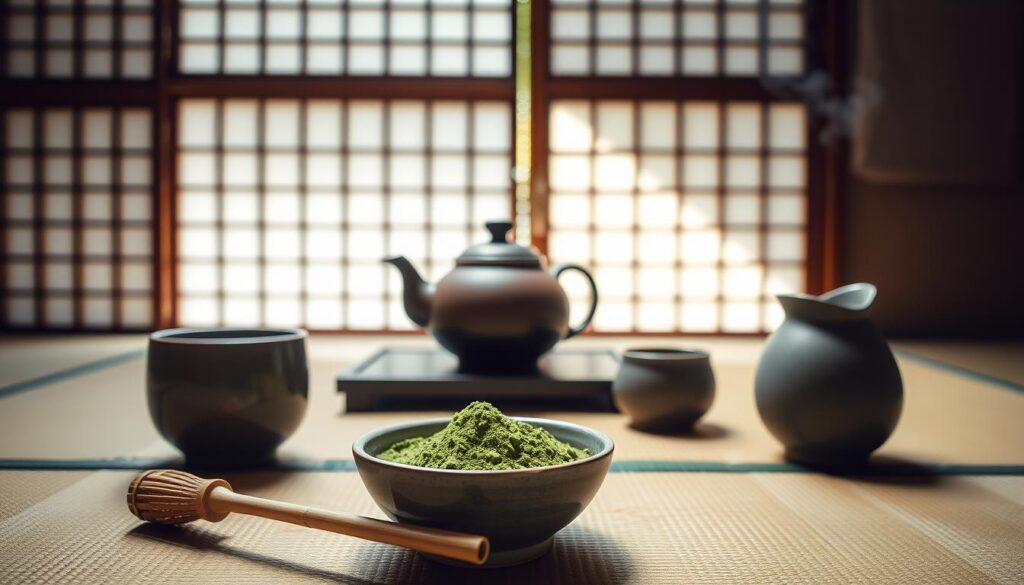
Step3: Adding the Right Amount of Water
Heat water to around 160°F to 170°F, slightly below boiling point. Pour about 30-40 ml of water over the matcha powder in the chawan. The water should be hot but not boiling, as boiling water can burn the matcha and affect its flavor.
Step 4 : Whisking Matcha: How to Make Matcha Frothy and Smooth
Use the chasen to whisk the matcha in a ‘W’ or ‘M’ motion. Start from the center and move outwards. The goal is to create a frothy texture on the surface. Whisk briskly but gently to avoid splashing. As you whisk, focus on the motion, like in meditation, to enhance the experience.
Soshitsu Sen XV, the grand tea master, once said, “The art of tea is not just about the taste, but about the mindfulness and the connection with nature.” This quote captures the essence of traditional Japanese matcha preparation, highlighting the importance of mindfulness and technique.
Common Mistakes to Avoid When Making Matcha
To make the perfect matcha, you must avoid some common mistakes. Making matcha is an art that needs attention to detail. Knowing these errors can greatly improve your experience. Here are some key mistakes to watch out for.
Water Temperature Errors
Water that’s too hot can burn the matcha, making it taste bitter. The water should be between 160°F and 170°F. Using boiling water can ruin the matcha’s delicate flavor and texture. Temperature control is key for the best matcha.
Improper Whisking Techniques
Whisking is a critical step when learning how to make matcha. The wrong whisking can make the matcha lumpy or frothy. The right method is gentle, zig-zag motions, not vigorous circular ones. This ensures a smooth, creamy texture.
Storage Mistakes That Ruin Matcha Quality
Storing matcha wrong can lower its quality. Air, light, and moisture can make it lose flavor and freshness. Store your matcha in an airtight container in a cool, dark place to keep it at its best.
How to Make Matcha Latte: A Creamy Alternative
Looking to make your matcha experience better? Learn how to make matcha latte for a creamy twist that blends tradition with comfort.
Traditional Matcha Latte Recipe
To make a traditional matcha latte, you need good matcha powder, steamed milk, and a sweetener. Here’s how to do it:
Hot Matcha Latte Step-by-Step
- Start by making your matcha the traditional way, using about 1 teaspoon of powder.
- Steam the milk until it’s hot and smooth.
- Put the matcha and milk together in a big cup.
Achieving the Perfect Froth
To get the perfect froth, use a milk frother or a steam wand. For extra luxury, try a handheld frother.
Dairy-Free Matcha Latte Options
Want a dairy-free matcha latte? There are many options. Here are a few:
- Almond milk
- Coconut milk
- Oat milk
- Soy milk
These can replace regular milk and add new flavors to your latte.
Sweetener Options and Measurements
Want to sweeten your latte? You can choose from many sweeteners. Here are a few:
- Honey: 1-2 teaspoons per cup
- Maple syrup: 1/2 to 1 teaspoon per cup
- Sugar or coconut sugar: 1-2 teaspoons per cup
Adjust the amount to your liking. Try different sweeteners to find your favorite.
Iced Matcha Latte Recipe for Hot Summer Days
Stay cool and energized with a simple iced matcha latte recipe. As summer heats up, a refreshing glass of iced matcha can be just what you need to stay cool and focused.
Basic Iced Matcha Preparation
To make a basic iced matcha latte, you’ll need:
- 1 teaspoon of matcha powder
- 2 oz of hot water
- 3 oz of milk (dairy or non-dairy)
- Ice cubes
- Optional sweetener (honey, sugar, or syrup)
First, whisk the matcha powder in hot water until frothy. Then, fill a glass with ice and pour the matcha mixture over the ice. Add milk and sweeten to taste.
Creative Variations and Add-ins
One of the joys of making iced matcha lattes is experimenting with different flavors and add-ins.
Fruit and Herb Infusions
You can infuse your iced matcha latte with fruits or herbs for unique flavors. Try adding:
- Mint leaves for a refreshing twist
- Lemon slices for a citrusy zing
- Strawberries or blueberries for a fruity twist
Boba and Jelly Additions
For a fun texture, consider adding boba or jelly to your iced matcha latte. You can use:
- Matcha-flavored boba for an intense matcha experience
- Fruit jelly for a sweet surprise
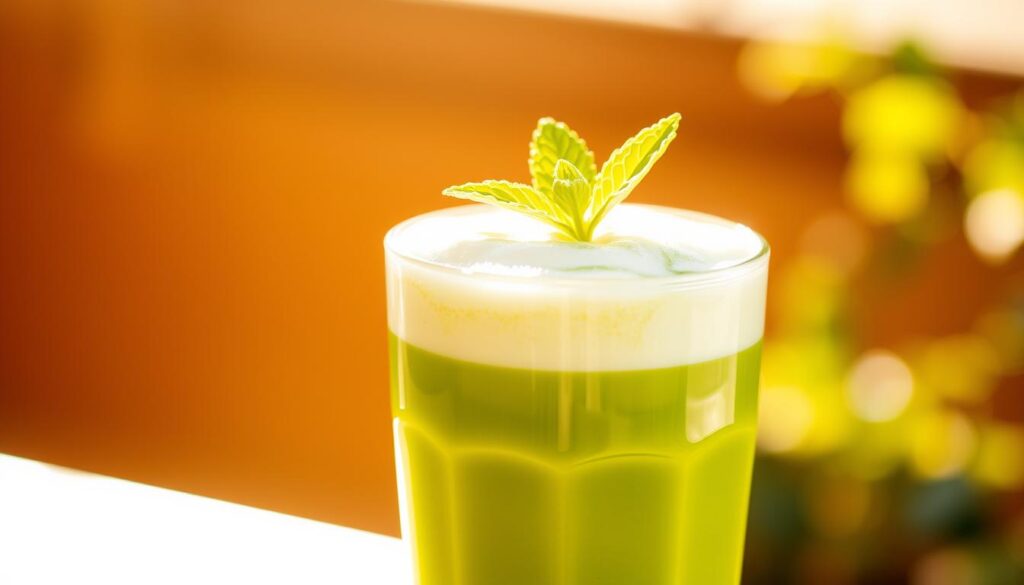
| Variation | Ingredients | Taste |
|---|---|---|
| Fruit Infusion | Matcha, milk, fruit (e.g., strawberries) | Sweet and Fruity |
| Boba Addition | Matcha, milk, boba | Creamy with a fun texture |
Incorporating Matcha into Your Daily Routine
Matcha can be a great addition to your daily routine. It provides a smooth lift in energy and supports focus. Knowing when and how to enjoy it helps you make the most of your tea experience.
Best Times to Drink Matcha for Energy and Focus
Drinking matcha at the right time can really make a difference. Having it in the morning can help start your day with energy and focus. You can also enjoy it before a workout for a natural lift or in the early afternoon to get past a mid-day slump. Try different times to see what works best for you.
Creating a Sustainable Matcha Habit
To make matcha a regular part of your day, start with a consistent schedule. Begin with a small amount, like one cup in the morning, and adjust based on taste and caffeine tolerance. Using high-quality matcha powder and the right tools can enhance your experience. Trying different recipes, like matcha lattes or smoothies, can make your matcha habit more enjoyable and varied.
Matcha Beyond the Cup: Culinary Uses and Recipes
Matcha is more than just a drink. It’s a versatile ingredient for sweet and savory dishes. You can also explore Chinese herbal teas to enrich your tea experience.
Matcha in Baking and Desserts
Adding matcha to desserts gives them a unique twist. You can mix it into cakes, cookies, and muffins for a vibrant green color. It adds a subtle, grassy flavor.
Matcha cheesecake, ice cream, and brownies are just a few examples. When baking with matcha, balance its bitterness with sweetness. Pair it with white chocolate or citrus for a perfect taste.
| Dessert | Matcha Pairing | Description |
|---|---|---|
| Cheesecake | White Chocolate | A creamy matcha cheesecake with a white chocolate crust. |
| Ice Cream | Citrus | Refreshing matcha ice cream with a hint of lemon zest. |
| Brownies | Dark Chocolate | Fudgy matcha brownies with dark chocolate chunks. |
Savory Applications for Matcha Powder
Matcha isn’t just for sweets. It’s great in savory dishes too. For natural hair and beauty care tips, check out how to make rosemary water or rosemary oil.
Savory Matcha Recipes:
- Matcha Salad Dressing: Whisk matcha powder with olive oil, soy sauce, and honey for a refreshing salad dressing.
- Matcha Soup: Add a teaspoon of matcha powder to your favorite soup recipe for an umami boost.
- Matcha Marinade: Mix matcha powder with soy sauce, garlic, and ginger for a marinade perfect for grilled chicken or fish.
“For a holistic wellness approach, you can also explore natural skincare options like a turmeric face wash.
Conclusion: Mastering the Art of Matcha
With practice, you can get better at making matcha and enjoy its many pleasures. This guide has given you the tools to know matcha’s taste, lifestyle aspects, and what you need to make it.
By using the traditional Japanese way and avoiding mistakes, you can make perfect matcha every time. Try out different recipes like matcha lattes and iced matcha to use it in your daily life.
Remember, mastering matcha takes time and effort. With these tips, you’re on your way to becoming a matcha pro.
With these steps, you now know how to make matcha and enjoy it in different ways. Whether you’re curious about how much caffeine is in matcha, want to explore its flavor, or try recipes like lattes, this guide covers it all.
This guide has given you the tools to know matcha’s taste, lifestyle aspects, and what you need to make it. With these steps, you now know how to make matcha and enjoy it in different ways.
Join our community to get more recipes and tips on how to make matcha part of your wellness ritual.


